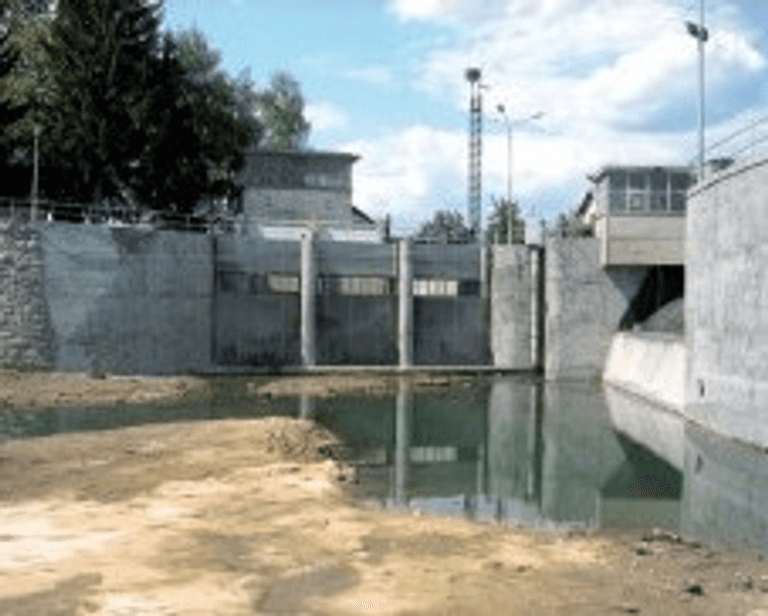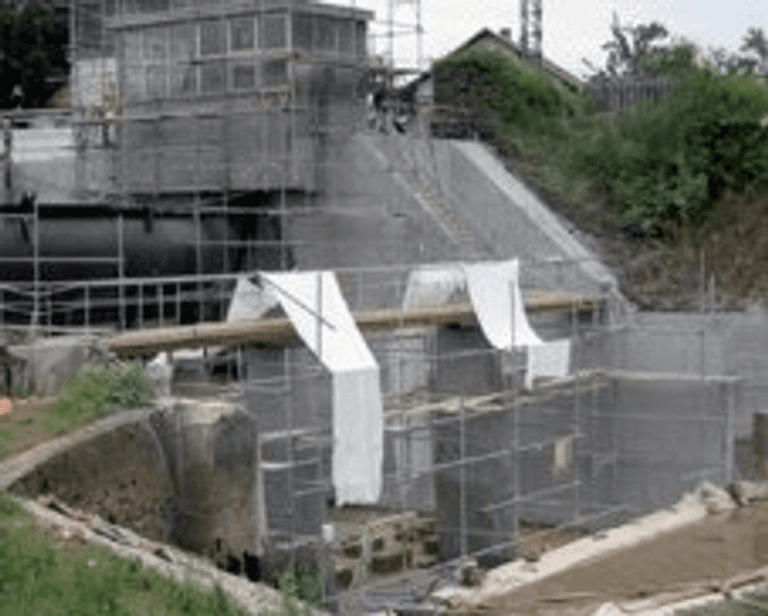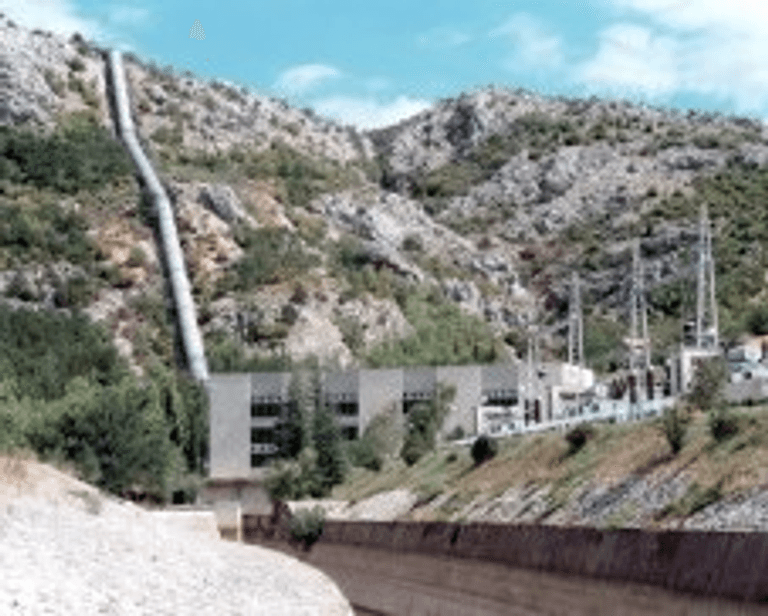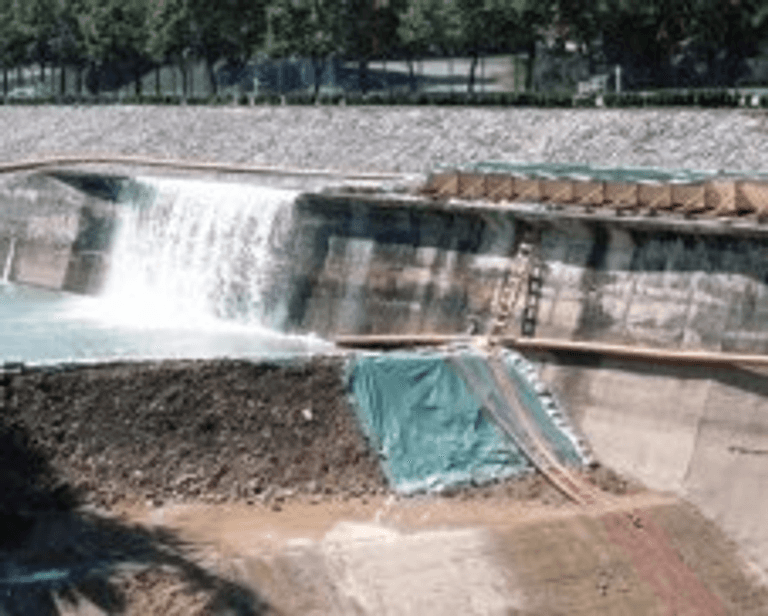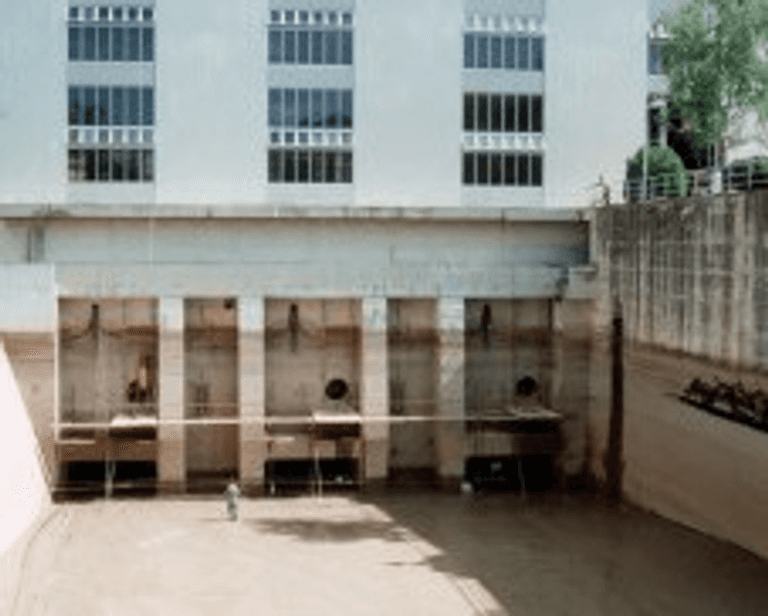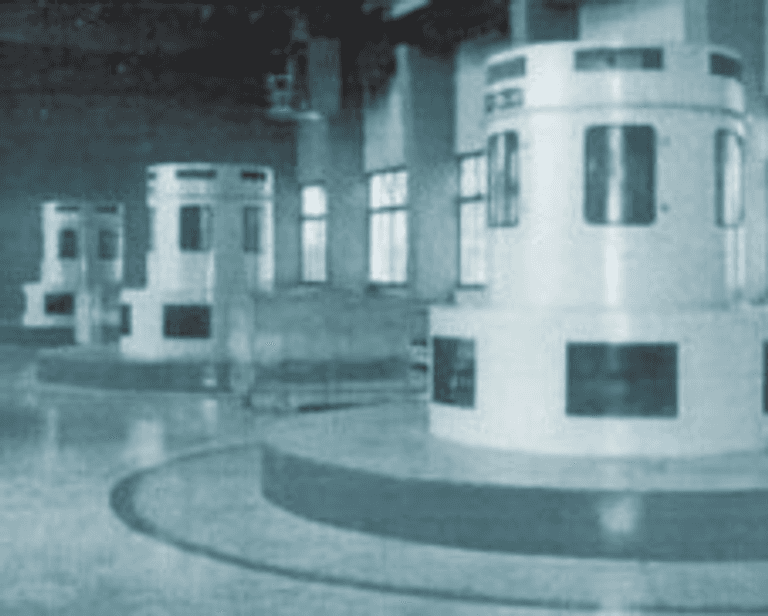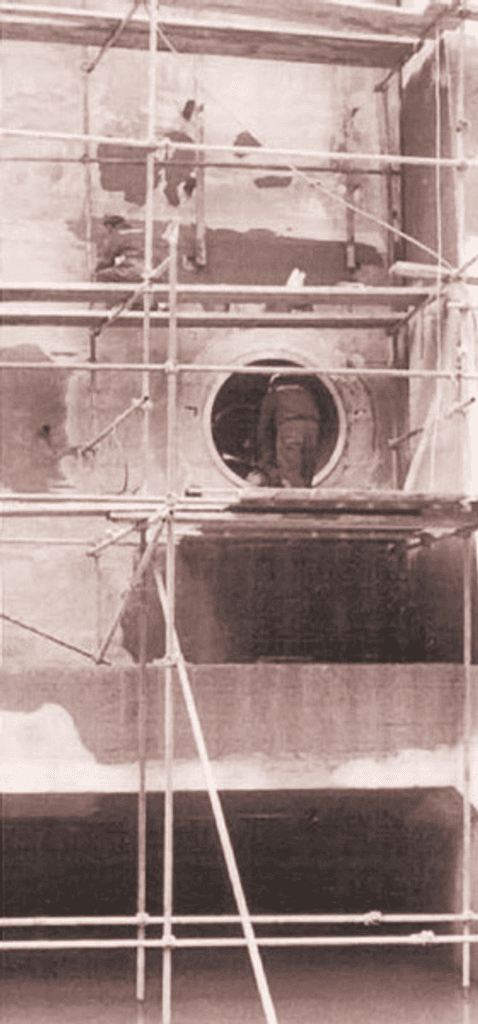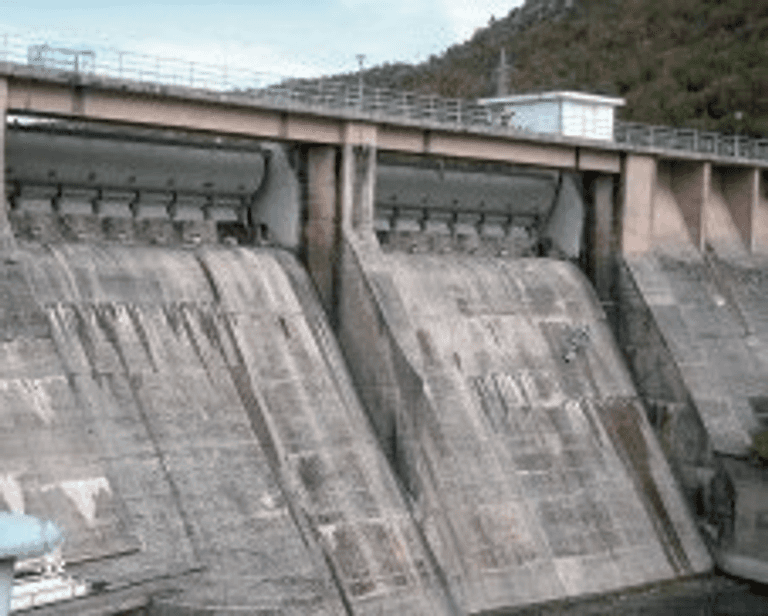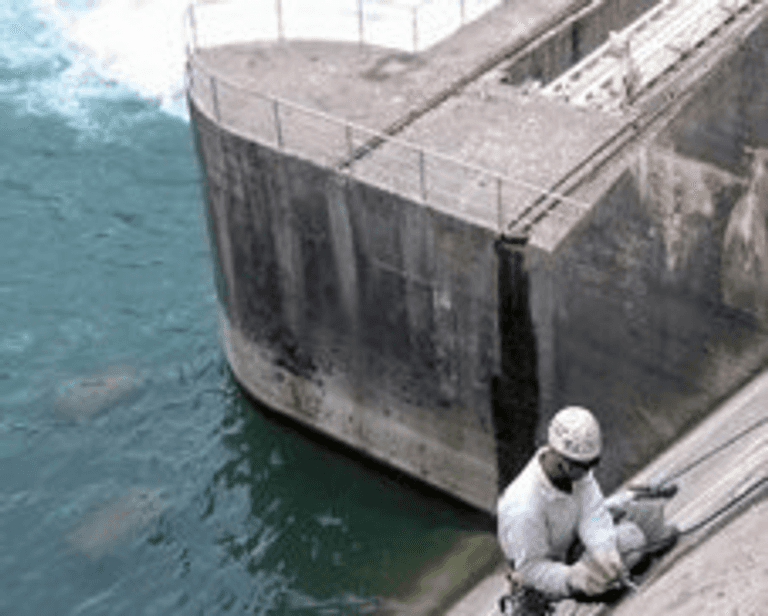



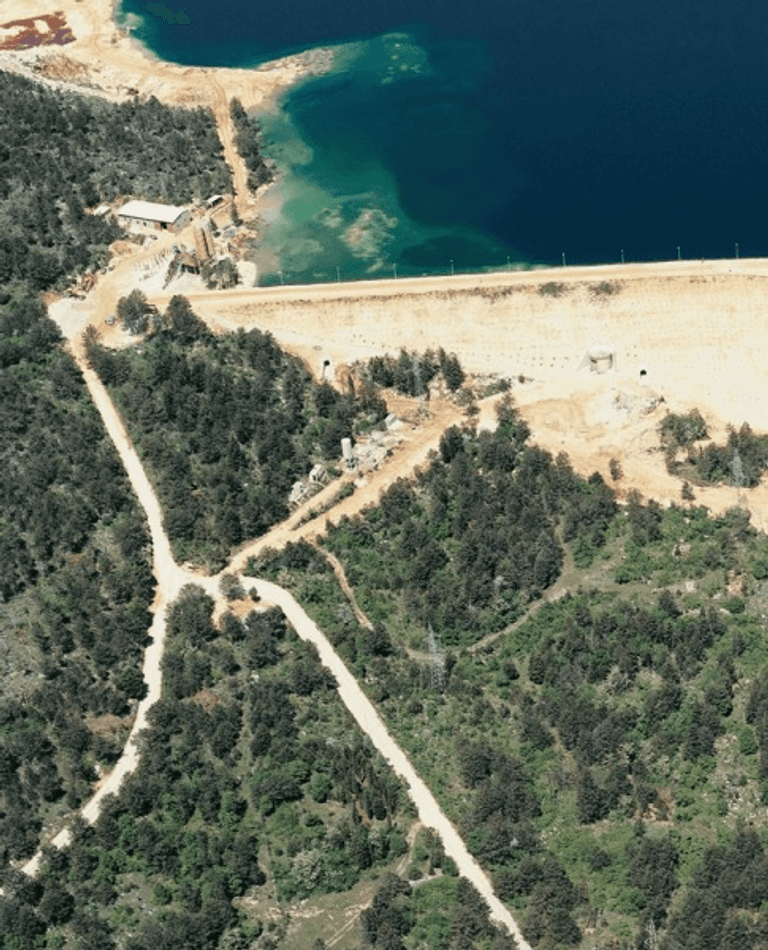
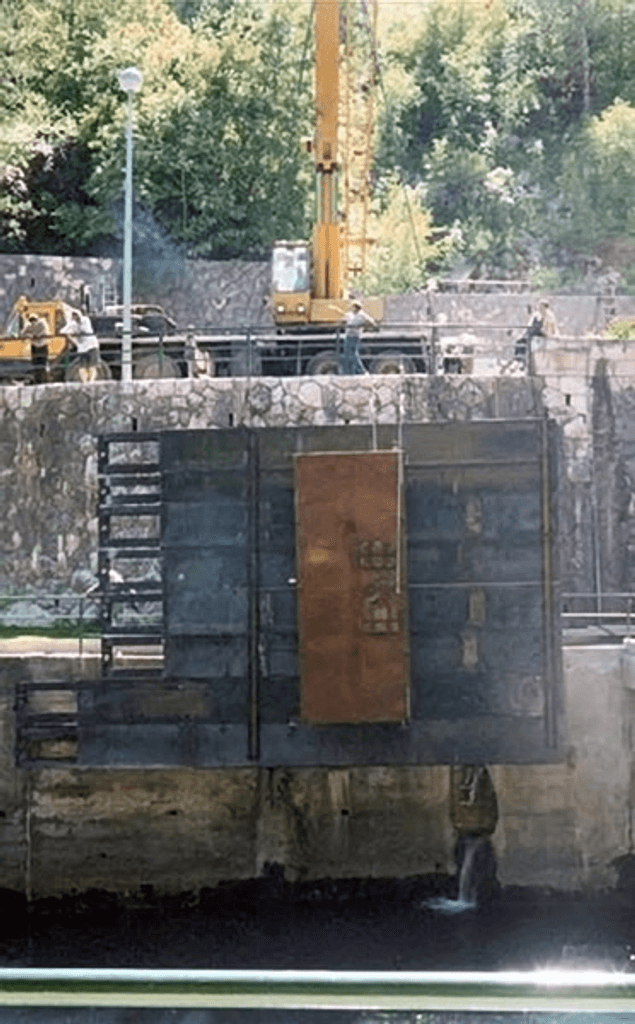
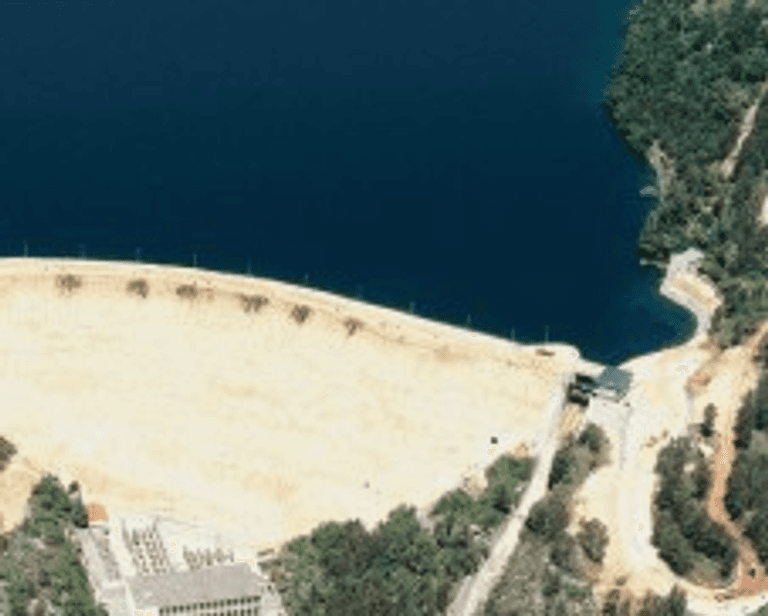
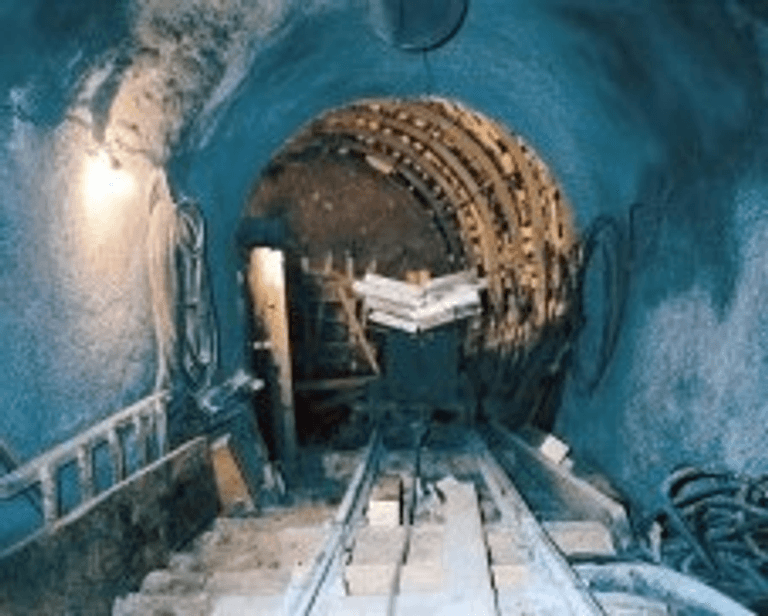
Rehabilitation of rail guides on diffuser gate of power plant "Peruča"
Hydroelectric power plant "Peruča" was built in 1960. The plant has an installed flow of 2x60 m/s and installed power Ni = 2x20.8 = 41.6 MW. During the Serbian aggression on Croatia, HEPP "Peruća" was occupied by rebel paramilitaries. On 28.01.1993, while withdrawing, they blew up the dam with the intention to destroy the HEPP "Peruća" and downstream settlements. Due to the age of buildings, unfavourable conditions of exploitation, as well as the consequence of the war, the structures of HEPP "Peruća" were damaged. The dam and the facilities that were damaged by blasting the dam were repaired immediately after the liberation of the plant. Electro mechanical, hydro mechanical equipment and related structures were replaced and refurbished in the process of revitalization of HEPP "Peruća".
An inspection of turbine diffusers showed damaged concrete by rails guides on the diffuser gate, due to which significant penetration of water into the diffuser area occurred. In order to ensure operational readiness of the facility and safety at work, it was necessary to repair this damage. Due to long-time operation and age there was damage on the surface of parts of the construction at the junction of the drainage channel and diffuser, above and under water. Therefore, within the scope of rehabilitation works on rail guides, these surfaces and the part of the facade damaged by war activities had to be repaired.
Rehabilitation of rail guides on the diffuser gate and parts of the construction at the junction of the diffuser and drain channel can be performed successfully and reliably only in conditions without the presence of water and therefore a prefabricated cofferdam was made so that rehabilitation works could be done in dry conditions.
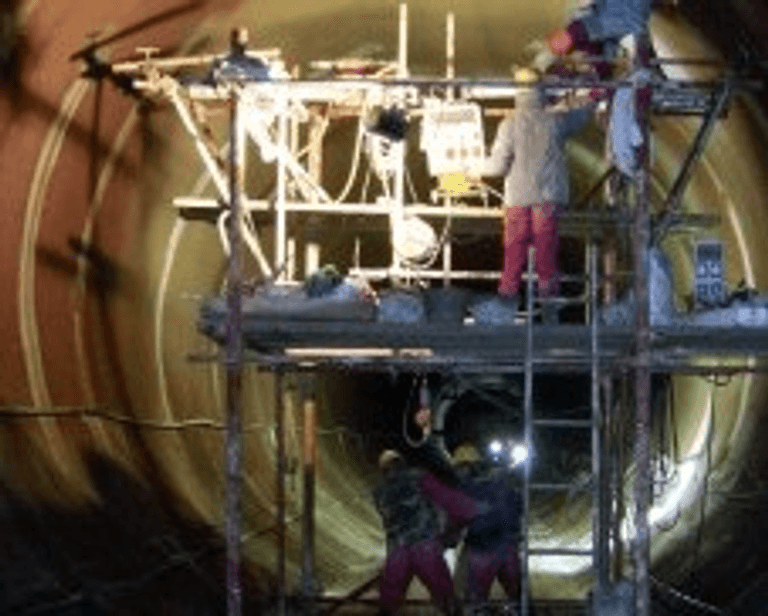



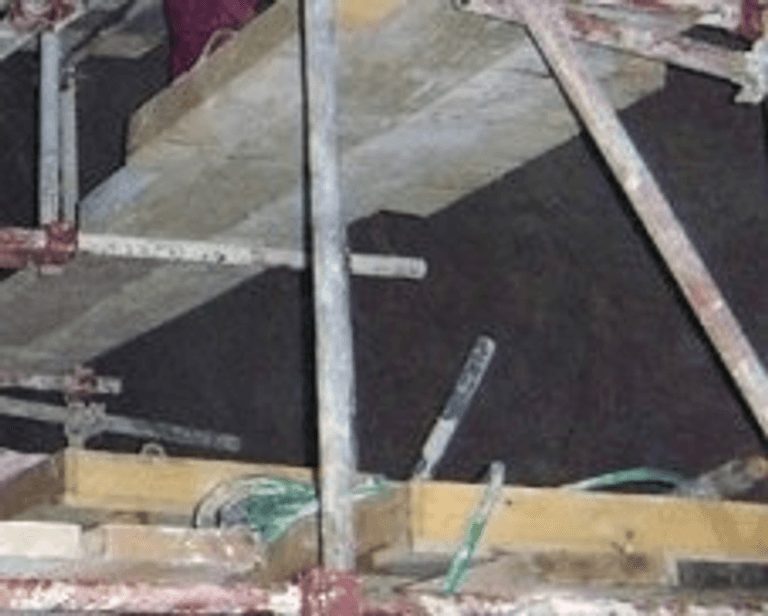
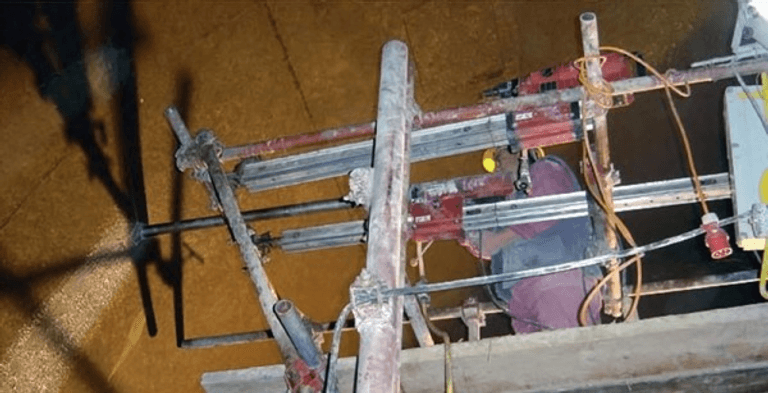
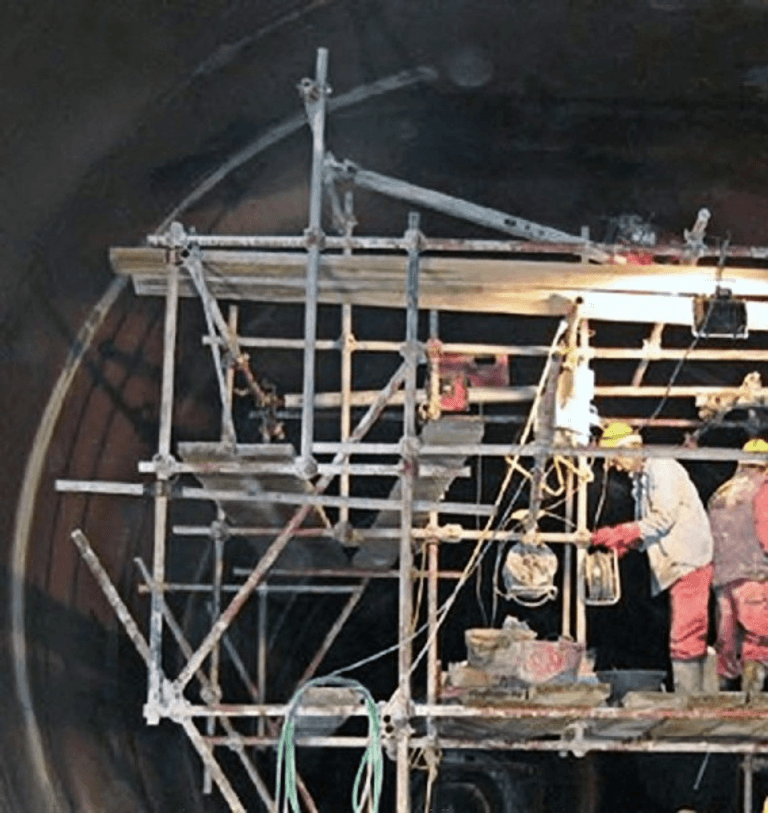
ENGINEERING REHABILITATION OF ENERGY STRUCTURES
Rehabilitation of the left supply tunnel of power plant "Zakučac"
Measurement of water losses in 2002 showed that water leaks out of the tunnel, at the highest water level in the lake Prančevići, increased by about 96% in relation to the measurement in 2001 (the previous measurement). Since there were no visible signs of any major damage that would cause such increased losses, two new measurings were performed in two series during 2003. Measurements of vertical displacement on the section from chainage 8 + 300 to 9 + 250 showed some discrepancies in the results, which indicated that there was a shift on one of the stable reference benchmarks. Therefore, additional reference benchmarks were built in.
The occurrence of parallel flows along the concrete lining and degradation of contact is a process that is more or less present in all hydraulic tunnels. On the left tunnel of HEPP "Zakučac" such process is especially dangerous in the area where the tunnel passes through marl which turns into mud in contact with water and washes off. Test drilling during inspection works confirmed that there was water in the marl area behind the lining. As this process could have intensified over time and would have resulted in even greater losses of water from the tunnel, even in instability of the surrounding rock or concrete lining of the tunnel, with the breakdown of the tunnel as the end result, it was concluded that all places (sections) where the contact was bad or seriously threatened should be rehabilitated.
Based on these measurements and analysis of the results, a Rehabilitation Project for the left supply tunnel of HEPP "Zakučac" was prepared. The project contains all typical solutions for specific types of rehabilitation, depending on the type of damage. Technical solutions of rehabilitation were divided into two main groups; in the first group were grouting works and in the second group works on rehabilitation of concrete lining. Systematic grouting along the entire tunnel is proposed, which would be carried out section by section, depending on the possibilities of interrupting the operation of the plant or draining the left supply tunnel for the needs of rehabilitation.
As the work of the power plant can't be stopped for a long time, it was planned that rehabilitation works would be performed in a number of seasons, on different sections. In this regard, depending on the degree of damage, the order of sections to be repaired was proposed. For easier contracting of works, the bill of quantities was divided in tunnel sections of 500 m. Until now repairs to the tunnel have been made twice, the first section from 9 + 770 m to 9 + 000 m, and the second section from 9 + 000m to 500m, repaired in 2006.
The most reliable data for determining the success of the performed rehabilitation works is continuous measurement of water losses from the tunnel before and after rehabilitation. Depending on the results of measurement of the losses, the scope of rehabilitation of future tunnel sections is determined.

